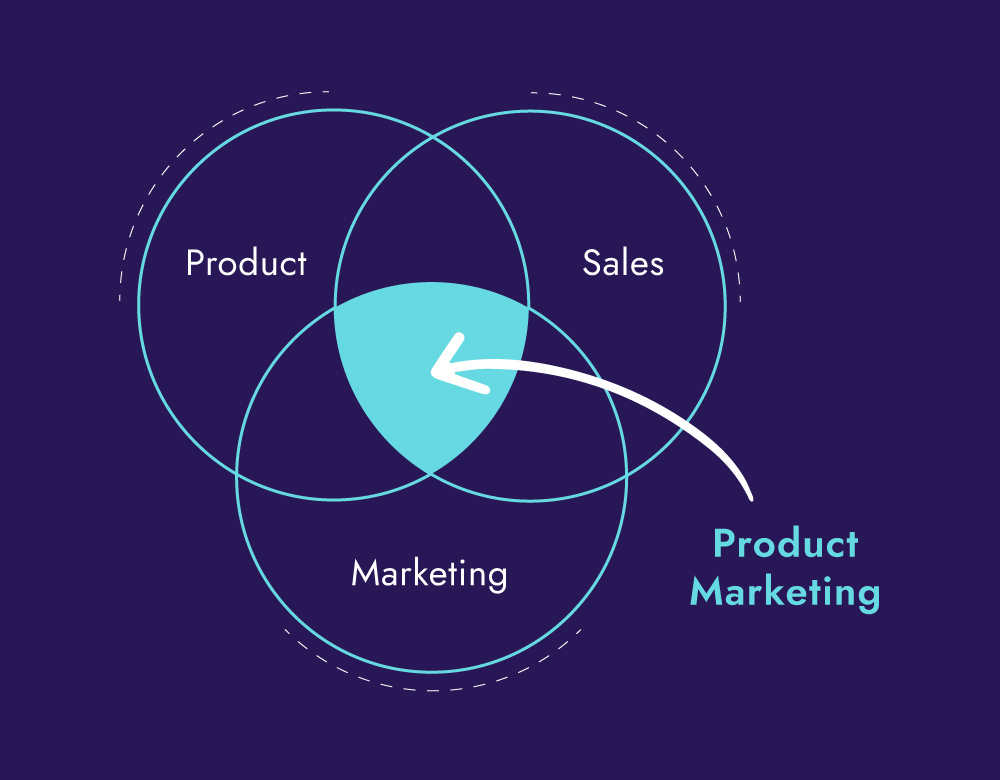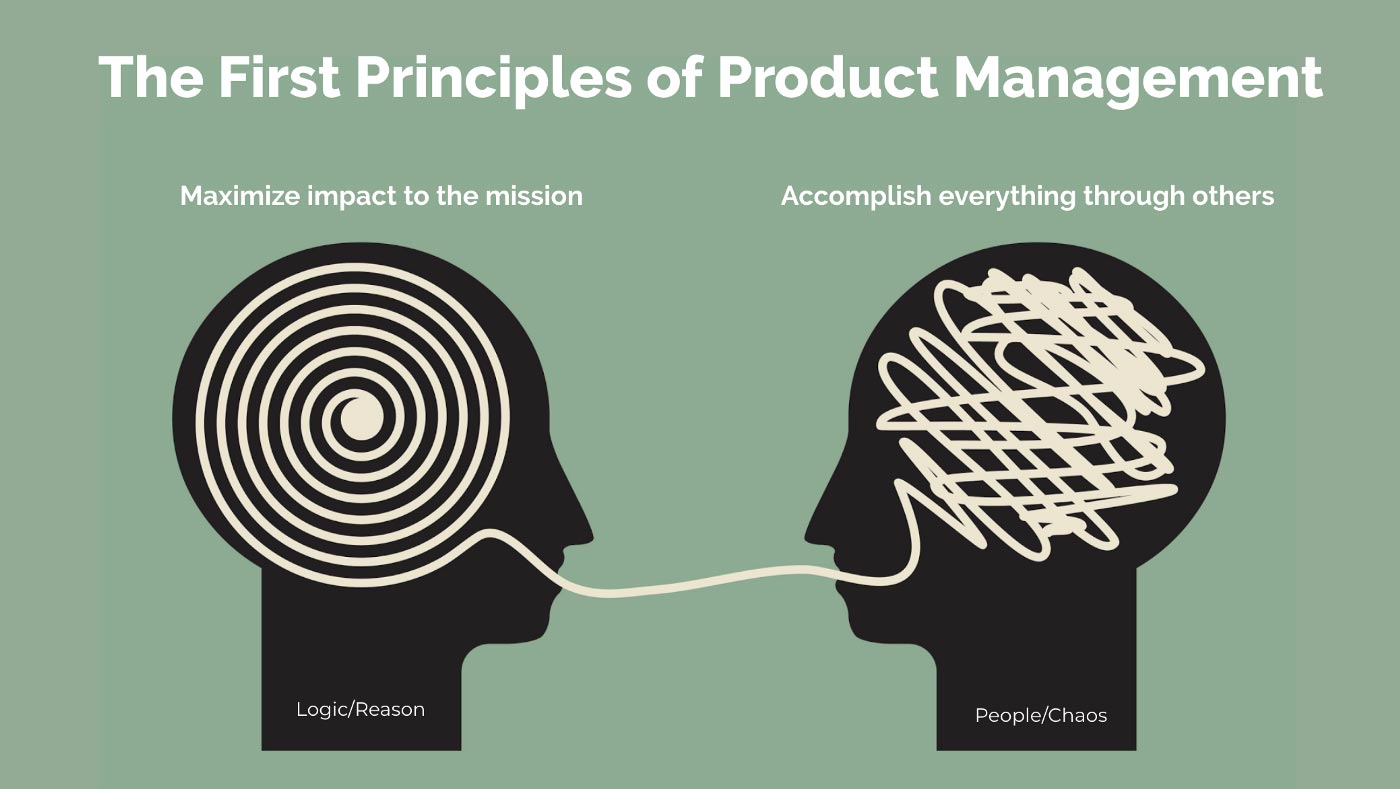The 100% Simple Beginner’s Guide: Product Marketing

You have a product. You intend to sell it. Sales are generated by marketing. Product marketing is for you, bada-bing, bada-boom. But exactly what is product marketing? What distinguishes it from "normal" marketing? Does it necessitate a one-of-a-kind marketing strategy?
These questions do not have a single correct answer. Product marketing is difficult to define because it adapts to the specific needs of individual practitioners, their products, and their overall business objectives.
Continue reading to learn more about product marketing and to see several different responses to the questions raised above. You'll learn how to implement and optimise your product marketing strategy in conjunction with your overall marketing and branding strategy.
What Is Product Marketing?
Product marketing focuses on critical marketing functions to strike a balance between product users and product positioning. It is much more than product-oriented marketing because it includes the consumer in the equation on an equal footing.

Buyer personas, product position statements across relevant industries, market research and competitor analysis, and sales enablement assets are examples of product marketer deliverables.
Product marketers collaborate closely with product managers, engineers, and other operations colleagues on new product development.
They collaborate with traditional marketers to plan and execute product launch strategies that maximise initial exposure to target consumers while also monitoring product reception and results.
Difference between product marketing & conventional marketing
Product marketing and traditional marketing are opposed. Each has its own set of objectives, strategies, core competencies, and marketing tools.

Traditional marketing is intended to drive conversions, generate leads, and generate sales. To manage contacts and deliver communications across channels, it relies on CRM software and other customer engagement platforms.
To generate interest and identify existing consumer demand, product marketing focuses on the product life cycle and new product pipelines. It focuses on marketing products or services through the brand and ensuring that sales enablement materials prepare sales teams to close deals.
It is dependent on project management, social listening, industry research, and other tools that are not always associated with marketing.
Product marketers may enlist traditional marketing teams or their tools to assist with the marketing of a new product or service launch. And traditional marketers will constantly collaborate with product marketers to better understand positioning and long-term product strategies.

Each works independently as well as collaboratively to shine the best light on the company, brand, and products to existing and new customers.
Role Of Product Marketing
-
Determine the positioning and messaging for the product.
-
Supervise the product launch.
-
Communicate the product's worth to salespeople and customers.
-
Increase product demand and usage.
A product marketer must work closely with the teams that build (product), advertise (marketing), sell (sales), and support (customer success) the product to achieve the four core objectives listed above. Product marketers who are effective become trusted experts who influence the efforts of each of these teams, ensuring that the product is built, advertised, sold, and implemented in a way that provides value to customers.
This diagram shows how product marketers serve as the glue/grease that connects and harmonises the efforts of the product, marketing, sales, and customer success teams:

Responsibilities of a product marketer
Many excellent articles delve into the day-to-day duties of product marketers. You'll notice some variations as you search and read them. The inconsistencies show how the role of a product marketer varies from organisation to organisation.
Here are some common roles and responsibilities of product marketers:
Choosing a positioning and messaging strategy
A product marketer's job is all about telling stories. Product marketers create effective positioning and messaging for their product(s) to persuade both internal and external stakeholders that their product can provide tangible value to its users. Check out The Pragmatic Institute's The Ultimate Guide to Positioning for more information.

Product launch management
A product marketer should collaborate with the product team to launch new products and features (i.e., ensure the new features are ready on time). This enables the marketing team to plan campaigns to announce and advertise the new features, as well as the sales team to effectively pitch the new features.
Creating sales collateral for the sales team
Sales enablement is an important part of a product marketer's job, as it helps the sales team sell the product effectively and win deals. They accomplish this by providing training and creating effective sales collateral.
Assisting with marketing campaigns
A product marketer should assist their marketing team in developing and implementing product marketing campaigns such as product placement. They should have an impact on the types of campaigns run, the audiences targeted, and the content used.

Creating and maintaining website content
A product marketer should be in charge of any product-related content that is published on the company website. As the product evolves and new features are introduced, the product marketer must ensure that the website is always up to date with accurate and compelling product information.
Obtaining customer feedback
This role is all about listening to current and potential product users. A product marketer should be an expert on their product's users' needs and desires. Quantitative surveys and qualitative interviews can be used to accomplish this.
Identifying and prioritising new product capabilities
A product marketer should assist their product team by providing insight into their users' unmet needs so that the product team can build the appropriate new features.

Performing a win-loss analysis
A product marketer should be an authority on why customers buy (or do not buy) their product. This is known as a win-loss analysis. This feedback and analysis are critical in allowing the product marketer to fulfil all of the roles listed above.
Where does product marketing fit within a company?
It's not surprising, given the name "product marketing," that there's some confusion about where product marketers should report within an organisation: to the product team or the marketing team. Product marketing is more commonly found within the marketing organisation in practice.
The universe's purpose for product marketing is to build the right product by translating customer needs into products they can't live without. The role of a product marketer is to translate these products into value propositions that compel customers to act. Based on this definition, they'd report under marketing. The alternative is an inconvenient disconnect between message and media.
Simply put, there is more overlap between product management and product marketing. The first word in the title is PRODUCT... if a product marketer wants to be successful, they must be intimately familiar with the product, understand the WHY, develop deep customer empathy, and be familiar with the competition. This is most easily accomplished when a product marketer works within Product. Sales enablement and powerful messaging are simply byproducts.
Finally, each organisation must determine whether to incorporate the product marketing function within the marketing organisation/product organisation or to establish it as an independent entity with its executive representation (i.e., an independent VP of Product Marketing).
Step-by-step product marketing for small businesses
Product marketing is not required for all small businesses. Even among those who do, not all have the traditional marketing foundation required to transition to product marketing. However, once you've decided to implement a product marketing strategy, there are some common steps to take.
1. Consumer & Market Research

The first step for product marketers is to conduct a thorough examination of their respective markets. The goal is to comprehend:
✧ Similar products in the market and their distinctive positioning
✧ The nature of the businesses producing competitive products
✧ Consumer problems that the product solves
The first goal of in-depth research is easily described as competitive analysis. This should just be a close examination of the individual products in your space, how they compare to one another and your product, and how they're positioned to consumers.
The second goal of the research is to learn about the companies that make the products you'll be competing with. This research will help you understand how mature the space is, how many resources you'll be competing against, and how competing products fit into a company's overall portfolio.
The ultimate goal of the research is to understand the customer pain points that your product addresses. It is critical to understand the primary and secondary personas who are interested in the product. It is also critical to identify the actual pain points and how the product solves them uniquely.
On the significance of this, Henry Ford famously stated that if he had done as his customers initially desired, he would have created a faster horse rather than revolutionising personal transportation.
2. Product Positioning & Messaging
Product marketers are responsible for contextualising their research and translating it into meaningful product positioning and messaging. This contextualization strikes a balance between creativity in messaging and positioning and the reality of the product, space, and consumer pain points.
Product positioning is critical for distinguishing yourself from competitors and connecting with personas and adjacent consumer targets. This messaging must be detailed enough to appeal to specific consumer segments while remaining high-level enough to appeal to a broader audience.
Many product marketers will create various position statements to appeal to various personas. These are essentially product marketing campaigns that are designed to accurately represent the product in a detailed, specific context for target consumer segments.
The messaging must also be consistent throughout the organisation for everyone to support it.
3. Go-to-market Strategy

The go-to-market strategy is the culmination of research, messaging, and a strategic plan for bringing the product to the masses as effectively as possible.
The go-to-market strategy specifies the channels, audiences, and other components that traditional marketing teams must support. It also helps to solidify the branding and creative elements that will be used in sales and marketing collateral.
The go-to-market strategy determines which personas will be targeted, the assets with which they will be targeted, the goal of these engagements, and how to move on to new personas.
Each go-to-market strategy may include multiple marketing campaigns for one persona, each persona may receive one campaign to begin, or a single high-level campaign will work across multiple personas. Now, if you do not have your customer profile or personas ready, let us help you out there by redirecting you to our customer profile article which you can read here.
The goal of the go-to-market strategy is to achieve results. Setting engagement, adoption, and other relevant goals for the individual campaign and overall product strategy is critical.
4. Briefing

Once a go-to-market strategy has been developed, all sales and marketing team members must be included. Your product launch and go-to-market strategy must be coordinated. This will maximise impact and allow anyone on your frontlines to speak about the new product's benefits.
Product marketers must ensure that sales leaders and their teams have all of the materials they need to talk about the new product. This includes sales sheets, pitch decks, product videos, and any other creative assets that will aid in the promotion of the product.
Traditional marketers' writers and designers will frequently step in to provide creative assistance. In addition, the entire marketing team must be briefed on the go-to-market strategy.
Digital managers, social media coordinators, email marketers, advertisers, and other channel operators must be familiar with the product to effectively promote it through their channels.
5. Launch! Then track performance

The product marketing plan can be launched and the product made life once the supporting teams have been briefed and are ready to go.
Depending on the nature of the product, this can mean a variety of things. It could be a shirt or other textile being sold on your online store. It could be a new app available in the app store. It might be a growing consulting and service offering for a new market.
To maximise launch effectiveness, the product marketer must lead sales and marketing through the launch, knowing when to stick to the script and when to pivot. Performance monitoring is critical for tracking consumer reaction to the product and ensuring it is targeting the right audiences with the best messaging possible.
Closing Words
It's safe to predict that product marketing will continue to gain prominence and relevance. Beyond software, other sectors will recognise the significance of the role in integrating and harmonising the activities of their product, sales, marketing, and customer success teams. Product marketers will then emerge as strong prospects for executive-level positions as they establish themselves as trusted advisors and strategic partners to all of these teams.


